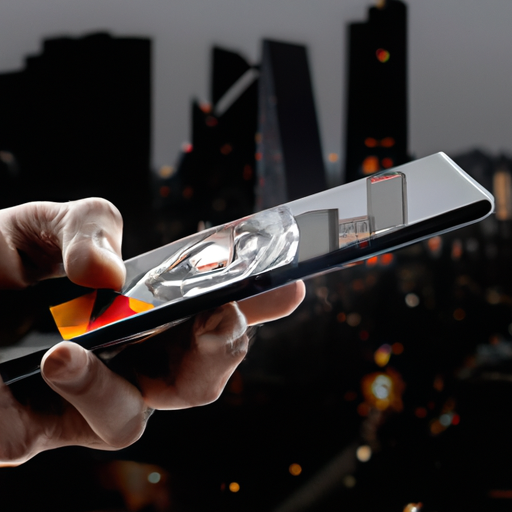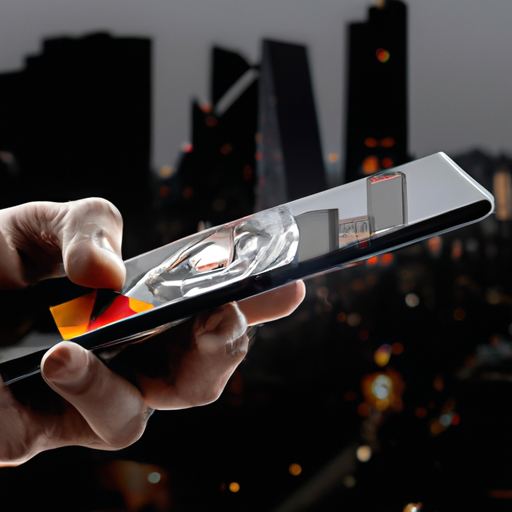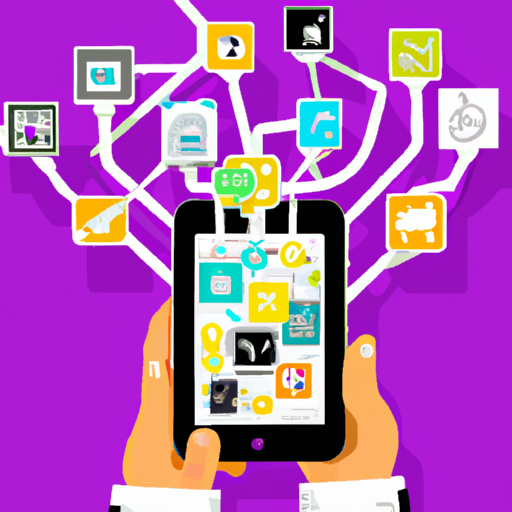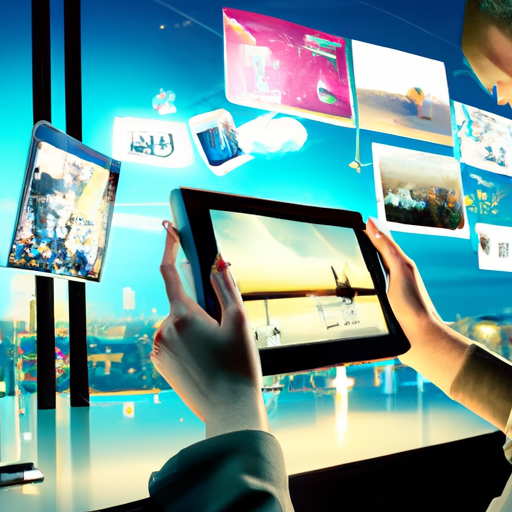Retail Technology Trends
In the constantly evolving world of retail, staying up to date with the latest technology trends is crucial for businesses to thrive. From augmented reality to artificial intelligence, this article explores the exciting advancements that are revolutionizing the retail industry. Whether it’s enhancing the customer experience or streamlining operations, these cutting-edge technologies are reshaping the way retailers engage with their audience and stay ahead in today’s highly competitive market. Get ready to discover the game-changing retail technology trends that are shaping the future of the industry.
Table of Contents
Artificial Intelligence
Chatbots
Artificial intelligence (AI) has revolutionized the way businesses interact with their customers, and chatbots are one of the most prominent examples of AI in retail. These computer programs are designed to simulate human conversation, allowing customers to engage with brands and receive immediate assistance. Chatbots can handle a wide range of inquiries, from product information to order status updates, providing customers with quick and efficient responses. By integrating chatbots into their customer service strategies, businesses can enhance their responsiveness and provide 24/7 support.
Virtual Assistants
In addition to chatbots, virtual assistants have become increasingly popular in the retail industry. Virtual assistants use AI technology to understand and respond to natural language queries and commands, making them valuable companions for customers in their shopping journey. These assistants can help customers find products, make recommendations based on preferences, and even complete purchases. By personalizing the shopping experience, virtual assistants not only enhance customer satisfaction but also drive sales and customer loyalty.
Personalized Recommendations
With the vast amount of data available, retailers have a treasure trove of information that they can leverage to provide personalized recommendations to their customers. By using AI algorithms, machine learning, and data analytics, retailers can analyze customers’ purchase history, browsing behavior, and preferences to curate personalized product recommendations. Personalized recommendations not only enhance the customer experience but also increase the likelihood of conversion and drive customer loyalty. Retailers can deliver these recommendations through various channels, such as email, mobile apps, and personalized web interfaces.
Internet of Things
Inventory Management
The Internet of Things (IoT) has transformed inventory management in the retail industry. By connecting physical items to the internet, retailers can track inventory levels in real-time, automate stock replenishment processes, and optimize warehouse operations. IoT sensors can monitor factors like temperature, humidity, and expiration dates, ensuring that perishable goods are properly stored. Additionally, IoT-enabled RFID tags can provide accurate and efficient inventory tracking, reducing the chances of stockouts or overstocking. By leveraging IoT technology, retailers can improve operational efficiency, reduce costs, and enhance customer satisfaction.
Smart Shelves
Smart shelves are another application of IoT technology in the retail sector. These shelves are equipped with sensors that can detect when products are running low or when items are misplaced. By automatically sending notifications to store employees, smart shelves help ensure that shelves are always properly stocked and organized. Moreover, smart shelves can be integrated with data analytics tools to gather insights on product performance, customer preferences, and buying patterns. This valuable information allows retailers to optimize shelf layouts, streamline product placement, and ultimately increase sales.
Augmented Reality
Virtual Fitting Rooms
Augmented reality (AR) has brought a new level of convenience and interactivity to the retail industry, particularly in the fashion and beauty sectors. Virtual fitting rooms enable customers to try on clothes, accessories, and even makeup virtually, eliminating the need for physical fitting rooms. By simply using their smartphones or AR devices, customers can see how an item would look on them without stepping foot in a store. This not only saves time but also reduces the hassle of dealing with crowded dressing rooms. Virtual fitting rooms enhance the online shopping experience, increase customer engagement, and reduce return rates.
Interactive Product Displays
AR technology has also transformed the way customers interact with products in physical stores. Interactive product displays allow customers to engage with virtual models or 3D renderings of products, providing a more immersive and informative shopping experience. For example, customers can see how furniture would look in their own homes or explore different variations of a product before making a purchase decision. By incorporating interactive product displays, retailers can captivate customers’ attention, educate them about the product features, and encourage them to make confident purchasing decisions.

Mobile Technology
Mobile Payments
Mobile payments have become increasingly prevalent, offering customers a convenient and secure way to make purchases. With mobile payment options like Apple Pay, Google Pay, and Samsung Pay, customers can quickly and securely complete transactions using their smartphones. Mobile payments eliminate the need for physical wallets or cash, providing a seamless and efficient checkout experience. By embracing mobile payments, retailers can cater to an increasingly cashless society, reduce transaction times, and enhance customer satisfaction.
Mobile Apps
Mobile apps have transformed the way customers engage with retailers and make purchases. Retailers can develop their own branded mobile apps, providing customers with a personalized and seamless shopping experience. Mobile apps allow customers to easily browse products, make purchases, track order statuses, and receive personalized offers and recommendations. Moreover, apps can leverage location-based services to offer customers tailored promotions based on their proximity to a physical store. By investing in a mobile app, retailers can strengthen their brand presence, increase customer loyalty, and drive sales.
Blockchain
Supply Chain Transparency
Blockchain technology has the potential to revolutionize supply chain management in the retail industry. By leveraging blockchain, retailers can create a decentralized and immutable record of every transaction and movement within the supply chain. This ensures transparency and traceability, reducing the risk of counterfeit products and ensuring ethical sourcing. Moreover, blockchain allows retailers to verify the authenticity of products, ensuring that customers are purchasing genuine items. By embracing blockchain technology, retailers can build trust with customers, strengthen brand reputation, and promote sustainability.
Secure Transactions
Blockchain technology also offers enhanced security when it comes to financial transactions. Traditional payment methods often involve intermediaries, which can introduce vulnerabilities and increase the risk of fraud. With blockchain-based transactions, the decentralized nature of the technology ensures that each transaction is verified and recorded in a secure and transparent manner. This reduces the risk of data breaches and unauthorized access, making transactions more secure for both retailers and customers. By adopting blockchain for financial transactions, retailers can provide peace of mind and build trust with their customers.
Data Analytics
Customer Behavior Analysis
Data analytics plays a crucial role in understanding and predicting customer behavior. By analyzing customer data such as purchase history, demographics, and online behavior, retailers can gain insights into customer preferences, motivations, and purchase patterns. This information allows retailers to personalize marketing campaigns, optimize product offerings, and provide targeted recommendations. Moreover, data analytics can help retailers identify trends and anticipate customer needs, enabling them to stay ahead of the competition and deliver exceptional customer experiences.
Inventory Optimization
Data analytics can also be leveraged to optimize inventory management. By analyzing historical sales data, retailers can forecast demand, identify slow-moving or obsolete inventory, and improve inventory turnover. This ensures that the right products are available at the right time, minimizing stockouts and maximizing sales opportunities. Additionally, data analytics can help retailers optimize pricing strategies, determine optimal reorder points, and reduce carrying costs. By harnessing the power of data analytics, retailers can streamline their inventory management processes, reduce costs, and increase profitability.
Robotics
Automated Checkout
Robotic technology has revolutionized the checkout process in retail. Automated checkout systems, such as self-checkout kiosks, allow customers to scan and pay for their items without waiting in long queues. These systems can speed up the checkout process, reduce labor costs, and improve overall customer satisfaction. Moreover, automated checkout systems can leverage AI algorithms to detect and prevent theft, further securing the transaction. By implementing automated checkout systems, retailers can provide a seamless and efficient checkout experience, leading to increased customer loyalty and satisfaction.
Stocking and Replenishment
Retailers can also leverage robotics for stocking and replenishment tasks. Automated robots can navigate store aisles, identifying out-of-stock items and restocking shelves. These robots can work alongside store employees, improving efficiency and reducing the time required for manual stocking. By automating stocking and replenishment processes, retailers can ensure that shelves are always properly stocked, reducing the chances of missed sales opportunities due to stockouts. Additionally, robots can perform tasks that are repetitive or physically demanding, allowing store employees to focus on more complex and customer-facing activities.
Cloud Computing
Data Storage and Accessibility
Cloud computing has transformed the way retailers store and access data. Instead of relying on physical servers and on-premises infrastructure, retailers can leverage cloud-based storage solutions to securely store and manage vast amounts of data. This provides scalability, flexibility, and cost savings, as retailers only pay for the storage and computing power they need. Moreover, cloud storage allows for seamless accessibility, enabling retailers to access data from anywhere and at any time. By adopting cloud computing for data storage, retailers can streamline their operations, enhance data security, and improve collaboration among employees.
E-commerce Integration
Cloud computing also facilitates seamless integration between physical stores and e-commerce platforms. By leveraging cloud infrastructure, retailers can ensure that their online and offline channels are fully integrated. This means that customers can have a consistent experience whether they shop in-store or online. Cloud-based e-commerce platforms enable real-time inventory updates, order management, and customer data synchronization, ensuring that customers have accurate information about product availability and order status. By integrating e-commerce with cloud computing, retailers can enhance the omnichannel shopping experience, increase operational efficiency, and drive sales.
Biometrics
Facial Recognition
Biometric technology, specifically facial recognition, has gained traction in the retail industry. Facial recognition systems allow retailers to identify and authenticate customers, providing a more personalized and secure shopping experience. These systems can be used for various purposes, such as allowing access to membership programs, making personalized product recommendations, or enabling contactless payments. Facial recognition technology also has the potential to prevent theft and enhance store security by identifying known shoplifters or unauthorized individuals. By implementing facial recognition technology, retailers can enhance customer convenience, personalize the shopping experience, and improve store security.
Fingerprint Scanning
Another form of biometric technology that retailers can leverage is fingerprint scanning. Fingerprint scanning systems allow for secure and convenient authentication in various retail scenarios. For example, fingerprint scanning can be used for employee access control, ensuring that only authorized personnel can access sensitive areas. This technology can also be integrated into mobile devices or payment terminals, allowing customers to make quick and secure transactions using their fingerprints. Fingerprint scanning provides an additional layer of security, as fingerprints are unique to individuals. By adopting fingerprint scanning technology, retailers can enhance security measures, reduce fraud, and provide a convenient shopping experience.
Social Media Integration
Social Selling
Social media has transformed the way retailers engage with customers and promote their products. Social selling refers to the use of social media platforms to sell products directly to customers. By leveraging platforms like Instagram, Facebook, and Pinterest, retailers can showcase their products, provide detailed information, and even facilitate seamless purchasing experiences within the social media environment. Social selling allows retailers to tap into a vast audience, build brand awareness, and drive sales. Moreover, social media platforms offer valuable insights and analytics that retailers can leverage to understand customer preferences and optimize their social selling strategies.
Influencer Marketing
Influencer marketing has become a powerful tool for retailers to reach and engage with their target audience. Influencers, who have established credibility and a dedicated following on social media platforms, can promote products and brands to their followers. Through influencer partnerships, retailers can leverage the influencers’ influence and engagement to boost brand awareness, drive traffic to their websites or physical stores, and ultimately increase sales. Influencer marketing allows retailers to tap into niche markets, build trust with customers, and create authentic connections. By integrating influencer marketing into their strategies, retailers can effectively leverage the power of social media and expand their reach.
In conclusion, retail technology trends have transformed the way retailers operate and engage with customers. From the integration of artificial intelligence to the adoption of blockchain and the utilization of data analytics, retailers have access to a wide range of technologies that can enhance operational efficiency, provide personalized experiences, and drive sales. By embracing these trends, retailers can remain competitive in today’s rapidly evolving market and deliver exceptional customer experiences.






